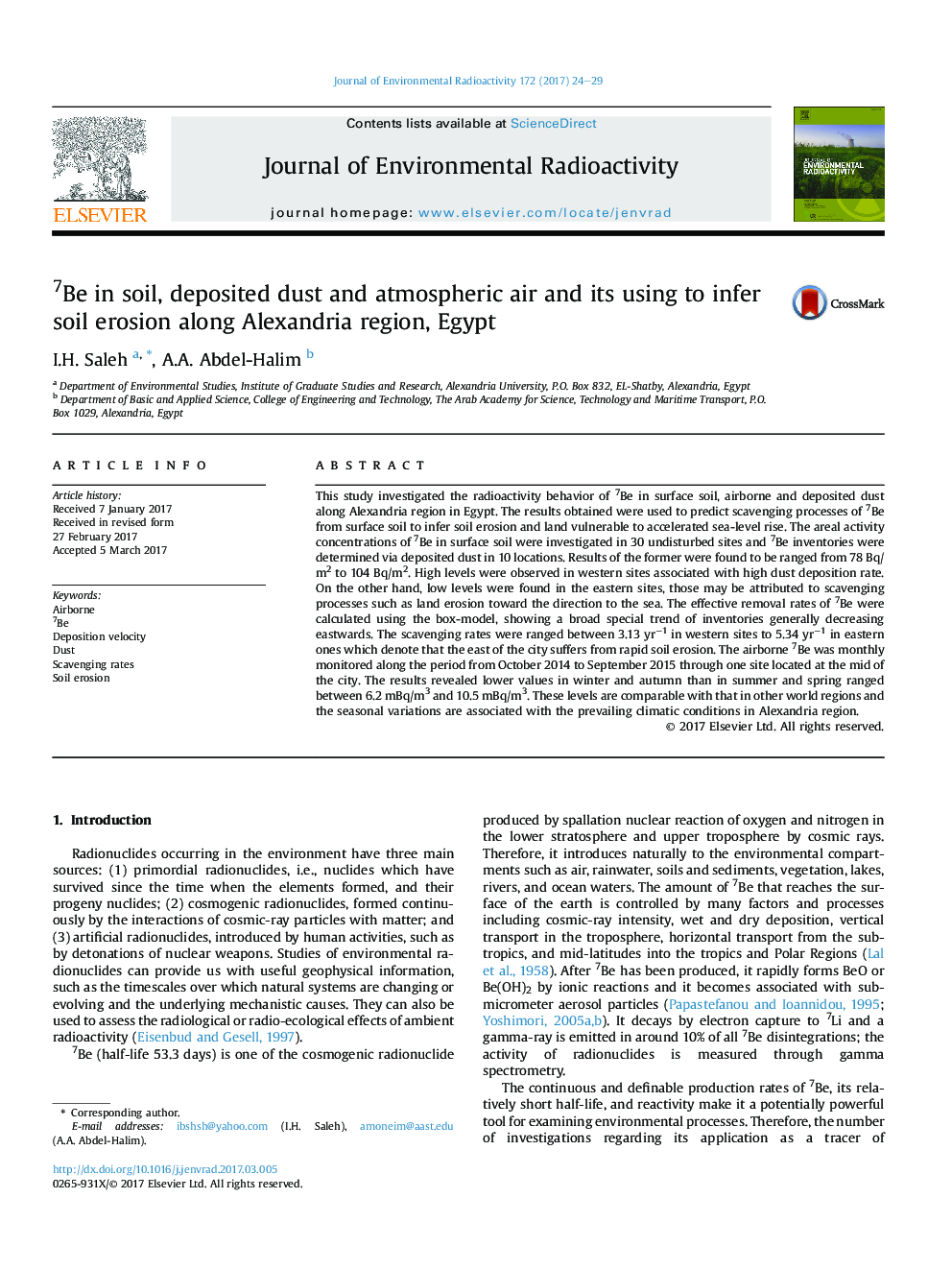| Article ID | Journal | Published Year | Pages | File Type |
|---|---|---|---|---|
| 5477525 | Journal of Environmental Radioactivity | 2017 | 6 Pages |
Abstract
This study investigated the radioactivity behavior of 7Be in surface soil, airborne and deposited dust along Alexandria region in Egypt. The results obtained were used to predict scavenging processes of 7Be from surface soil to infer soil erosion and land vulnerable to accelerated sea-level rise. The areal activity concentrations of 7Be in surface soil were investigated in 30 undisturbed sites and 7Be inventories were determined via deposited dust in 10 locations. Results of the former were found to be ranged from 78 Bq/m2 to 104 Bq/m2. High levels were observed in western sites associated with high dust deposition rate. On the other hand, low levels were found in the eastern sites, those may be attributed to scavenging processes such as land erosion toward the direction to the sea. The effective removal rates of 7Be were calculated using the box-model, showing a broad special trend of inventories generally decreasing eastwards. The scavenging rates were ranged between 3.13 yrâ1 in western sites to 5.34 yrâ1 in eastern ones which denote that the east of the city suffers from rapid soil erosion. The airborne 7Be was monthly monitored along the period from October 2014 to September 2015 through one site located at the mid of the city. The results revealed lower values in winter and autumn than in summer and spring ranged between 6.2 mBq/m3 and 10.5 mBq/m3. These levels are comparable with that in other world regions and the seasonal variations are associated with the prevailing climatic conditions in Alexandria region.
Related Topics
Physical Sciences and Engineering
Energy
Nuclear Energy and Engineering
Authors
I.H. Saleh, A.A. Abdel-Halim,
